
The photoelectric effect is the emission of electrons when electromagnetic radiation, such as light, hits a material. Electrons emitted in this manner are called photoelectrons. The phenomenon is studied in condensed matter physics, solid state, and quantum chemistry to draw inferences about the properties of atoms, molecules and solids. The effect has found use in electronic devices specialized for light detection and precisely timed electron emission.
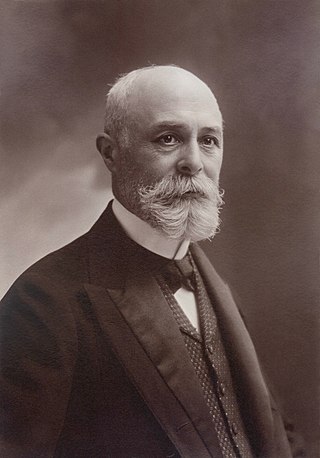
Antoine Henri Becquerel was a French engineer, physicist, Nobel laureate, and the first person to discover radioactivity. For work in this field he, along with Marie Skłodowska-Curie and Pierre Curie, received the 1903 Nobel Prize in Physics. The SI unit for radioactivity, the becquerel (Bq), is named after him.

Claude Servais Mathias Pouillet was a French physicist and a professor of physics at the Sorbonne and member of the French Academy of Sciences.

Alexandre-Edmond Becquerel, known as Edmond Becquerel, was a French physicist who studied the solar spectrum, magnetism, electricity and optics. He is credited with the discovery of the photovoltaic effect, the operating principle of the solar cell, in 1839. He is also known for his work in luminescence and phosphorescence. He was the son of Antoine César Becquerel and the father of Henri Becquerel, one of the discoverers of radioactivity.
The year 1886 in science and technology involved some significant events, listed below.

Ferdinand Frédéric Henri Moissan was a French chemist and pharmacist who won the 1906 Nobel Prize in Chemistry for his work in isolating fluorine from its compounds. Moissan was one of the original members of the International Atomic Weights Committee.

Jacques-Louis Soret was a Swiss chemist and spectroscopist. He studied both spectroscopy and electrolysis.
The photovoltaic effect is the generation of voltage and electric current in a material upon exposure to light. It is a physical phenomenon.
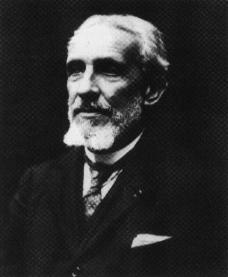
Édouard-Alfred Martel, the 'father of modern speleology', was a world pioneer of cave exploration, study, and documentation. Martel explored thousands of caves in his native France and many other countries, popularised the pursuit of cave exploration, introduced the concept of speleology as a distinct area of scientific study, maintained an extensive archive, and in 1895 founded Société de Spéléologie, the first organisation devoted to cave science in the world.
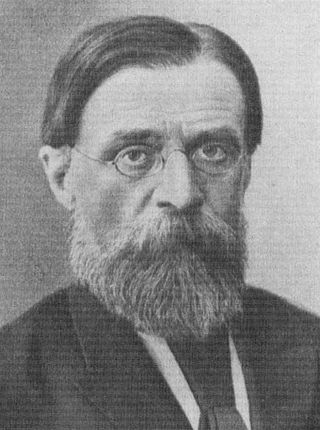
Alexander Grigorievich Stoletov was a Russian physicist, founder of electrical engineering, and professor in Moscow University. He was the brother of general Nikolai Stoletov.
Henri Claude Bénard was a French physicist, best known for his research on convection in liquids that now carries his name, Bénard convection. In addition, the historical surveys of both Tokaty and von Kármán both acknowledge that Bénard studied the vortex shedding phenomenon later named the Kármán vortex street, prior to von Karman's own contributions. Bénard specialized in experimental fluid dynamics, and the use of optical methods to study it. He was a faculty member at the universities at Lyon, Bordeaux, and finally the Sorbonne in Paris.
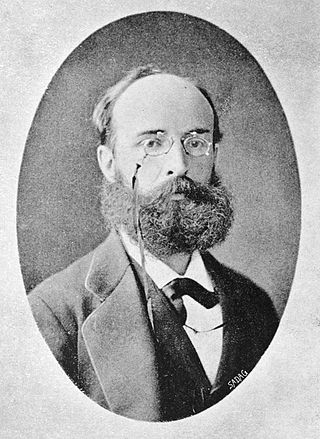
Hermann Fol was a Swiss zoologist and the father of modern cytology.
LeRoy W. Apker was an American experimental physicist. Along with his colleagues E. A. Taft and Jean Dickey, he studied the photoelectric emission of electrons from semiconductors and discovered the phenomenon of exciton-induced photoemission in potassium iodide. In 1955, he received the Oliver E. Buckley Condensed Matter Prize of the American Physical Society for his work.

Théodose Achille Louis Vicomte du Moncel or Théodore du Moncel was a prominent French physicist and advocate of the use of electricity. He invented many electrical devices and wrote several books. He was also a proficient artist, making high-quality prints of scientific and cultural interest.
Étienne Halphen was a French mathematician. He was known for his work in geometry, on probability distributions and information theory.
Blondel's experiments are a series of experiments performed by physicist André Blondel in 1914 in order to determine what was the most general law of electromagnetic induction. In fact, noted Blondel, "Significant discussions have been raised repeatedly on the question of what is the most general law of induction: we should consider the electromotive force (e.m.f.) as the product of any variation of magnetic fluxsurrounding a conductor or of the fact that the conductor sweeps part of this flux?".
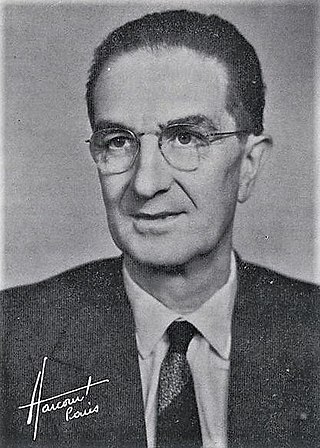
Jacques Marie Benoit was a French physician, biologist and neuroendocrinologist. He was a professor at the Collège de France and is considered one of the pioneers of neuroendocrinology and photobiology.
Neurospora sitophila is a species of fungus also known as red bread fungus or orange bread fungus. It is a mold that spoils various foods and is responsible for occupational asthma in the wood and cork industry.
Jeanne Ferrier was a French physicist. She was a pioneer in the field of radiotherapy.









